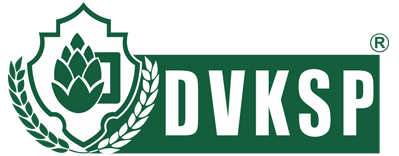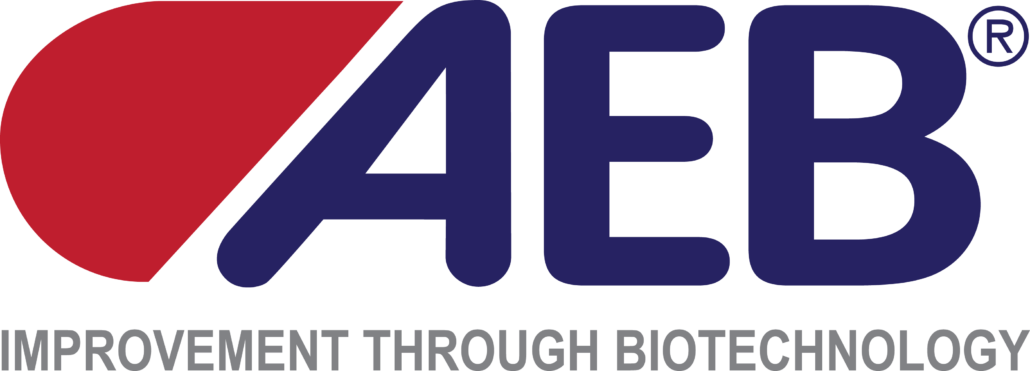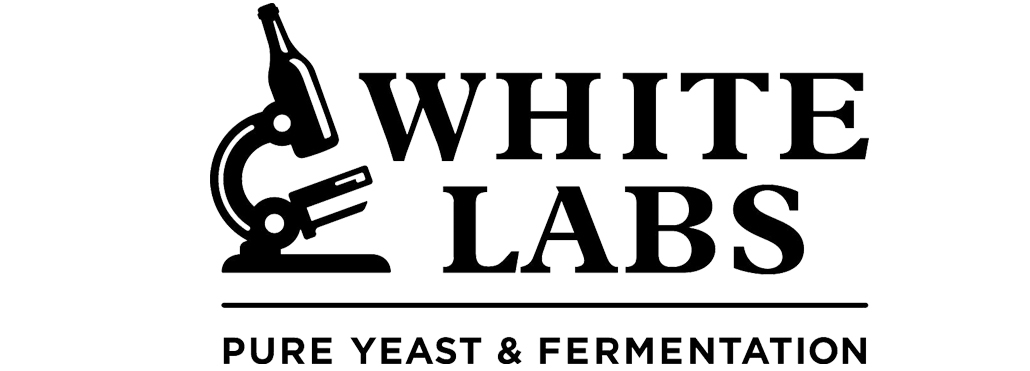AEB DRY YEAST PRODUCTS
WHITE LABS – PUREPITCH PRODUCTS
Brewing yeast is a microorganism that plays a crucial role in the fermentation process of beer production. It belongs to the fungi kingdom and is classified as Saccharomyces cerevisiae, commonly known as ale yeast or brewer’s yeast. Here’s an overview of brewing yeast and its significance in beer brewing:
Fermentation Process: Yeast converts the sugars derived from malt into alcohol, carbon dioxide, and various flavor compounds during the fermentation process. This metabolic activity of yeast is what transforms the sweet wort (unfermented beer) into the finished alcoholic beverage.
Types of Brewing Yeast:
- Ale Yeast: Ale yeast, also known as top-fermenting yeast, is used in the production of ales and other top-fermented beer styles. It thrives at warmer temperatures (typically between 15-24°C or 59-75°F) and tends to produce fruity and estery flavors. Ale yeast ferments relatively quickly and often rises to the top of the fermentation vessel.
- Lager Yeast: Lager yeast, also known as bottom-fermenting yeast, is used in the production of lagers and other bottom-fermented beer styles. It prefers cooler temperatures (around 7-13°C or 45-55°F) and has a slower fermentation process. Lager yeast tends to produce clean and crisp flavors, with fewer esters compared to ale yeast. It settles at the bottom of the fermentation vessel.
- Hybrid Yeast: Some yeast strains possess characteristics that exhibit both ale and lager yeast traits. These hybrid yeast strains can ferment at a broader temperature range and offer a balance between the characteristics of ale and lager yeasts. They are often used in the production of hybrid beer styles or experimental brews.
Role of Brewing Yeast in Beer Production:
- Fermentation: Yeast metabolizes the sugars in the wort, converting them into alcohol and carbon dioxide. This process is known as fermentation. The yeast consumes the fermentable sugars, primarily maltose, and produces alcohol, imparting the desired alcoholic strength to the beer.
- Flavor and Aroma: Brewing yeast contributes significantly to the flavor and aroma profile of beer. Different yeast strains produce distinct flavors and aromas, ranging from fruity and estery notes (banana, apple, pear) to spicy or phenolic characteristics (clove, pepper). The choice of yeast strain has a significant impact on the overall flavor profile of the beer.
- Carbonation: During fermentation, yeast produces carbon dioxide, which creates the carbonation in beer. This carbonation adds effervescence and a pleasant mouthfeel to the finished product.
- Attenuation: Yeast attenuation refers to the yeast’s ability to ferment and consume the available sugars in the wort. Yeast strains can exhibit different levels of attenuation, determining the final sweetness or dryness of the beer. High attenuation yeast strains consume more sugars, resulting in a drier beer, while low attenuation strains leave more residual sweetness.
- Flocculation: Flocculation refers to the yeast’s tendency to clump together and settle at the bottom of the fermentation vessel after fermentation is complete. Yeast strains can have varying levels of flocculation, impacting the clarity and appearance of the finished beer.
Yeast Management: Proper yeast management is crucial for consistent fermentation and beer quality. Brewers often employ techniques such as yeast propagation, pitching rates, and yeast health monitoring to maintain optimal yeast performance. Additionally, yeast can be harvested and re-pitched for subsequent brews, reducing costs and ensuring consistency in flavor and fermentation characteristics.
In summary, brewing yeast is a vital ingredient in the beer production process, responsible for the fermentation and transformation of wort into beer. Its unique characteristics, including fermentation temperature range, flavor profile, attenuation, and flocculation, contribute to the wide variety of beer styles available. Understanding and selecting the appropriate yeast strain is essential for achieving the desired flavors and aromas in the final beer product.
FAQS for Beer Brewing Yeast for Making Beer.
1. what is brewers yeast used for?
Brewer’s yeast has long been used for making bread, brewing beer, and producing wine and other alcoholic drinks. It is also a popular source of B vitamins and, more recently, a supplement for essential minerals.
2. What is another name for brewers yeast?
Saccharomyces cerevisiae, commonly known as brewer’s yeast or baker’s yeast, is one of the most recognized yeast species in Craft and Commercial Beer Brewing.
3. Which yeast is used in beer?
Most beers are brewed using a yeast strain called Saccharomyces, which means “sugar fungus” in Latin, reflecting its love for fermenting sugars. Within this genus, the two most commonly used species are lager yeast and ale yeast. These yeasts are responsible for fermentation, with lager yeast used for bottom-fermented beers and ale yeast used for top-fermented beers.
4. How much yeast per Litre beer?
For most types of yeast, except lager yeast, in one liter of beer 0.5 to 0.8 grams of yeast per liter of beer is required. DVKSP recommends a dosage of 50 to 80 grams per hectoliter of wort.
5. How many types of beer are there?
There are 3 Types of Beer: Ale, Lager & Hybrid Beers. Ales are fermented with top-fermenting yeast at warm temperatures (60˚–70˚F), and lagers are fermented with bottom-fermenting yeast at cold temperatures (35˚–50˚F). Some beers can be classified as hybrids, containing both lager beers and ale characteristics.
6. What foods contain brewers yeast?
Brewer’s Yeast is Found in:
– Beer
– Wine
– Liquor
– Kombucha
– Fermented foods like kefir, yogurt, pickles, and meats
– Bread products
– Leavened cereal products
– Miso
7. What is ale yeast?
Ale yeast, a strain of Saccharomyces cerevisiae, is used to brew various beers, including pale ales, brown ales, dark ales, wheat beers, Belgian ales, and more.
8. What is ale yeast used for?
Ale yeast, a strain of Saccharomyces cerevisiae, is used in the brewing of various styles of beer, including pale ales, brown ales, dark ales, wheat beers, Belgian ales, and more. It is a top-fermenting yeast that works best at warmer temperatures, producing a quicker fermentation and a wide range of complex flavors in beer.
9. How long does ale yeast ferment?
Ale yeast typically ferments beer in about two weeks. However, the fermentation time can vary depending on the yeast strain and beer style. In contrast, lager yeast usually requires four to eight weeks for fermentation.
10. what is Dry Yeast?
Dry yeast, a dehydrated form of baker’s yeast, has an extended shelf life and doesn’t require refrigeration. It’s commonly used in baking to improve texture, rise, and flavor. The two most common types available in stores are active dry yeast and instant dry yeast.
11. What is Dry Yeast used for?
Dry yeast is a dehydrated version of baker’s yeast with a long shelf life and no need for refrigeration. It’s widely used in baking to improve texture, rise, and flavor in bread and other baked goods. Several types of dry yeast are available to suit different recipes.
12. Is Dry Yeast Same as Regular Yeast?
No, dry yeast is not the same as regular yeast. While both are used in brewing beer, dry yeast is a dehydrated form that has a longer shelf life and doesn’t need refrigeration. Regular yeast, often referred to as fresh or liquid yeast, contains live yeast cells and is typically used in smaller batches. Dry yeast is convenient for homebrewers and commercial breweries due to its ease of use and storage.
13. What are the 2 types of dried yeast?
The two main types of dried yeast used in beer brewing are active dry yeast and instant dry yeast.
– Active dry yeast needs to be rehydrated in warm water before use, as it is more dormant when packaged.
– Instant dry yeast is finer and can be added directly to the wort without rehydration, as it is more active from the start.
Both types are commonly used in homebrewing and commercial brewing.
14. What kind of yeast is used to make alcohol?
Saccharomyces cerevisiae, also known as brewer’s or baker’s yeast, is used to make alcohol. This yeast converts sugars and starches into alcohol and carbon dioxide during fermentation, making it essential in brewing, baking, and winemaking.
15. What is the best yeast for beer?
The best yeast for beer depends on the style you’re brewing. For optimal results, use AEB & White Labs Yeast range. AEB Dry yeast, which combines Saccharomyces cerevisiae, enzymes, and nutrients, is perfect for brewing quality beer with sugar.
16. What is fermentation of dry yeast?
Fermentation of dry yeast begins by adding must to a yeast cell suspension. The process generates excess yeast, with about 20% of it being dried for future use, while 80% continues the fermentation process to produce alcohol.
17. What are the two types of yeast used in beer?
The two main types of yeast used in beer are ale yeast and lager yeast. Ale yeast is a top-fermenting yeast (Saccharomyces cerevisiae) that ferments at warmer temperatures, while lager yeast is a bottom-fermenting yeast (Saccharomyces pastorianus) that ferments at colder temperatures.
18. What yeast is used in lager beer?
Lager beer is brewed using Saccharomyces pastorianus, a bottom-fermenting yeast that works best at cooler temperatures, typically used to brew crisp, clean-tasting lager beers.
19. What is the difference between lager yeast and ale yeast?
The key difference is fermentation. Ale yeast is top-fermenting and works at warmer temperatures (60˚–70˚F), while lager yeast is bottom-fermenting and works at colder temperatures (35˚–50˚F), leading to different flavor profiles in the final beer.
20. Why use lager yeast?
Lager yeast is ideal for cold fermentation (48–58°F/9–14°C), which produces a crisper beer with fewer yeast-derived flavors like esters and phenols. It can also ferment a wider range of sugars, contributing to the clean taste of lagers.
21. Which is better, lager or ale?
When choosing between lager and ale, it depends on personal taste. Ales tend to have more complex flavors, including fruity notes, and contain more beneficial compounds like antioxidants. Lagers, on the other hand, are lighter and have fewer calories.
22. What pH is lager yeast?
Lager yeast typically produces a final beer pH of 4.2–4.6, contributing to the crisp and clean profile of lagers. Some ales can finish with a lower pH, around 3.8, while sour beers may have an even lower pH.
23. What pH is Ale Yeast?
Ale yeast typically ferments at a slightly higher pH than lager yeast, with finished ales having a pH of around 4.2–4.5, depending on the yeast strain and fermentation conditions.
24. How do you activate beer yeast?
To activate dry beer yeast, add 1 package of yeast to 1 cup of 80°F water in a sanitized container. Stir gently, then let it sit for 15–30 minutes until foam forms. Once activated, pitch the yeast into the fermenter.
25. What is the best yeast for beer?
For brewing beer, the best yeast depends on the style. Saccharomyces cerevisiae (ale yeast) is ideal for room-temperature fermentation, creating fruity characteristics in many ales, while Saccharomyces pastorianus (lager yeast) works best at colder temperatures, producing clean, crisp lagers.
26. How does fermentation temperature affect beer flavor?
Fermentation temperature significantly affects beer flavor. Warmer temperatures used for ale yeast produce complex, fruity, and spicy notes, whereas cooler temperatures used for lager yeast result in a clean, crisp taste with fewer byproducts.
27. Why is yeast important in brewing?
28. What is top-fermenting yeast?
Top-fermenting yeast refers to ale yeast, which rises to the top of the fermentation vessel during fermentation. This type of yeast ferments at warmer temperatures and produces ales with rich, complex flavors.
29. What is bottom-fermenting yeast?
Bottom-fermenting yeast refers to lager yeast, which sinks to the bottom of the fermentation vessel during fermentation. This type of yeast ferments at cooler temperatures, resulting in beers with a clean, crisp flavor.
30. How long does ale fermentation take?
31. How long does lager fermentation take?
Lager fermentation can take several weeks to months due to the cooler fermentation temperatures, which slow down yeast activity and require additional conditioning time known as lagering.
32. Can I use ale yeast to make lager?
While it’s possible to use ale yeast at cooler temperatures to produce lager-like beers, true lagers require the unique characteristics of lager yeast to achieve the clean, crisp profile typically associated with this style.
33. What are hybrid yeast strains?
Hybrid yeast strains combine characteristics of both ale and lager yeasts, allowing them to ferment at a wider range of temperatures and produce unique flavors that blend the best of both yeast types.
34. How do pure yeast cultures improve brewing?
Pure yeast cultures, introduced by Emil Christian Hansen, ensure more consistent and predictable fermentation results by using a single strain of yeast, reducing the risk of contamination and off-flavors.
35. Why is genome analysis important in brewing yeast?
Genome analysis helps brewers develop new yeast strains with desirable traits, such as enhanced flavor profiles, improved fermentation efficiency, and resistance to environmental stresses, leading to better quality beers.
36. What is the role of Saccharomyces cerevisiae in brewing?
Saccharomyces cerevisiae is the primary yeast species used for ale brewing. It ferments at warmer temperatures and produces complex, fruity, and spicy flavors characteristic of ales.
37. What is Saccharomyces pastorianus?
Saccharomyces pastorianus is a hybrid yeast species used for lager brewing. It ferments at cooler temperatures, producing clean, crisp beers with fewer fruity and spicy notes compared to ales.
38. Why choose DVKSP for brewing yeast?
DVKSP offers a wide range of premium brewing yeast strains, including ale, lager, and hybrid yeasts. Their high-quality products and expertise helps brewers to achieve optimal fermentation results and consistent beer quality.
39. What makes DVKSP yeast products stand out?
DVKSP’s yeast products are sourced from reputable manufacturers and are meticulously selected for their quality and performance. Whether you’re brewing ales, lagers, or innovative hybrid styles, DVKSP provides the best yeast solutions to meet your brewing needs.


